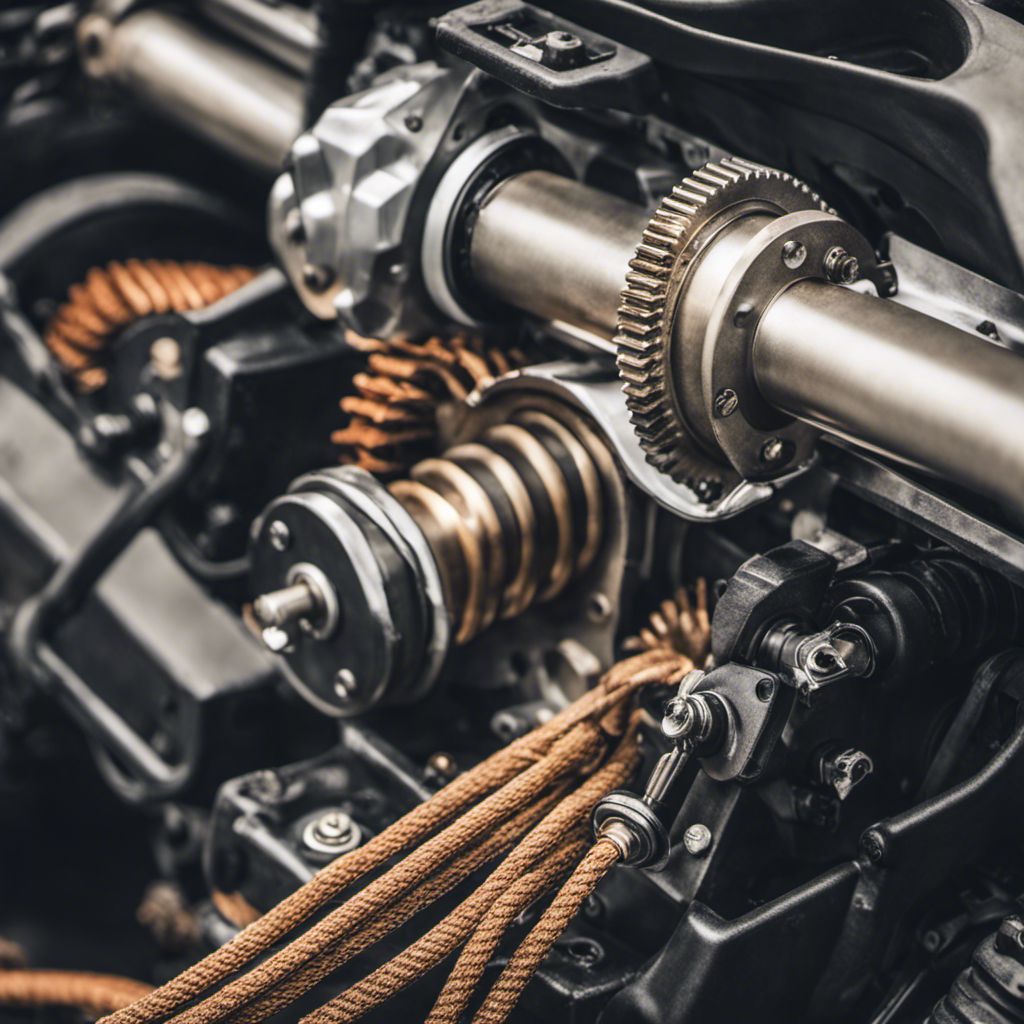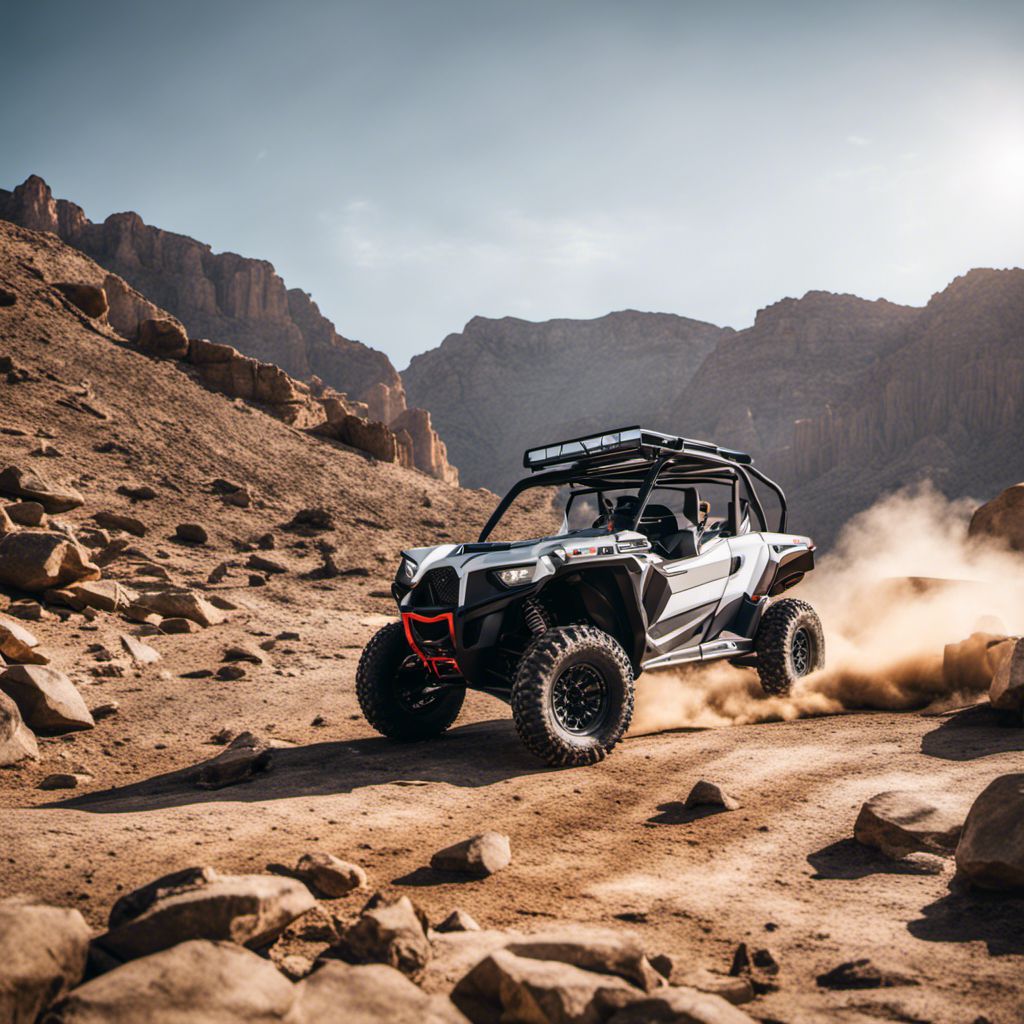Has your dependable ATV winch started showing signs of wear, or is the plow not working as effectively as before? We’ve found ourselves in a similar position and fully grasp how this can throw a wrench into your plans.
In our experience, our Moose Plow outlasted the winches on our Sportsman ATV by several years. This blog post aims to break this cycle with a plethora of handy insights and maintenance tips that will help you keep your ATV winches and plows performing at their peak for longer.
So why wait? Dive right in; reliability is just around the corner!
Key Takeaways
- ATV winches have many parts. They need to be strong and well taken care of.
- Winches come in two types: Electric and Hydraulic. Each has its pros and cons depending on the user’s needs.
- Regular use, cleaning, oiling, and checks can keep your ATV winch working for a long time. Always look out for water damage and rust!
- Problems like slow line speed, overheating or slipping winch lines may come up. To fix these issues you might need to check cables, clean the motor or let it cool down. Regular care helps avoid such troubles!
Understanding ATV Winches

Getting to know your ATV winch is crucial. First, let’s delve into the various components and features that make up a typical winch. It’s not just about having a strong pull! Next, we’ll throw light on different types of ATV winches out there in the market.
It’s truly fascinating how varied they can be in form and function! Finally, we’ll guide you through choosing the right winch for your vehicle – because yes, it does matter greatly what type of vehicle you ride.
Trust us, correct selection will save much headache down the road!
Components and features
We all want a strong ATV winch. It needs good parts to work well. Here is what an ATV winch should have:
- Power Unit: This is the motor. It gives power to pull.
- Gear Set: These are the gears that help pull heavy stuff.
- Winch Line: This can be wire or synthetic rope to pull and lift things.
- Hook: You tie this to what you want to pull or lift.
- Remote Control: This lets you use the winch from a safe spot.
- Winch Drum: The line rolls around this when you are pulling.
- Fairlead: This guides the line on and off the drum in a straight line.
Types of ATV winches
ATV winches come in a variety of types, primarily categorized into electric and hydraulic winches.
| Type | Description | Pros | Cons |
|---|---|---|---|
| Electric Winches | Electric winches are powered by the ATV’s battery and are the most common choice among ATV riders. They can use either a steel cable or a synthetic rope. | These winches are more portable and easier to install. They are highly versatile and convenient for most riders. | They are dependent on the ATV’s battery, thus can drain it rapidly. They also have a risk of overheating with continuous use. |
| Hydraulic Winches | Hydraulic winches use the ATV’s power steering pump to function. Just like electric winches, they can also use either a steel cable or a synthetic rope. | They provide continuous power without overheating. They do not rely on the ATV’s battery, making them suitable for extended use. | These winches require a running engine to maintain their operation, hence they are not suitable for all situations. They are also more complex to install. |
While both types of winches have their unique pros and cons, the choice is mainly down to the specific needs and preferences of the ATV rider.
Choosing the right winch for your vehicle
We need to think about a few things when picking the right winch. First, look at your ATV’s weight. Then, think of where you’ll ride your ATV – hard hills or flat ground? This plays a big part in choosing the correct winch size.
Bigger is not always better here! Usually, for most UTVs, a winch with 2000-3000 pound pulling power works great. Also look into horsepower ratings of the winch you like. Keep in mind to go for waterproof and rust-proof types as well! They will last longer even if they get wet or dirty wear from use outdoors.
Maintaining Your ATV Winch

Proper maintenance of your ATV winch is crucial for optimal performance and longevity. Regular use, inspection, and cleaning help keep it in top shape. Strive to lubricate moving parts often and always check for any water intrusion that could lead to rusting or corrosion.
Don’t overlook conducting periodic inspections – they enable early detection of worn-out components that need prompt replacement or repair. Through attentive care, your ATV winch can serve you reliably over time without hiccups while on the trail or helping with chores around your property.
Regular use and inspection
We believe in the power of using and checking your ATV winch often. It can help keep your winch in top shape.
- Make it a habit to use your winch often.
- Always examine the winch, winch cable, and controls before starting your ATV.
- Keep an eye out for worn or loose parts that may need fixing.
- Pay special attention to the mounting hardware.
- Take time to unspool and inspect the rope on your winch from time to time.
- Don’t forget to change out any damaged rope.
- Checking these things can make sure your ATV winch works great for a long time.
- Skip using the winch if you see parts that need fixing or changing out. This will ensure its reliability in the long run.
Lubrication and cleaning
We all know that our ATV winches need good care to stay in top form. Here are some easy tips for cleaning and oiling your winch.
Checking for water intrusion
Keeping our ATV winches dry is key. Water can cause lots of problems if not checked in time. Here are some things we can do:
- Watch out for signs of water damage. This is the first step to knowing if water has gotten into your winch.
- Spot rust as soon as it starts. Rust grows from water and air touching metal parts. It can slow down your winch.
- Clean all electrical parts often to stop corrosion forming and affecting how the winch works.
- Take care when washing your ATV, especially around the winch area. Try not to use a pressure wash on this area because it can force water into important areas that should stay dry – like the solenoid pack and motor.
- Stay clear of silicone on your winch, as it may cause more harm than good to its parts.
- Check for any stripped gears in the winch – these are a sign that something’s not right! They could mean you’ve been using your winch wrong, or there’s too much load on it, causing slippage under pressure.
Periodic winch inspections
Let’s take good care of our ATV winches. Here are some tips on how to do periodic winch inspections:
- Look at the winch rope first. See if it has any damage. If it does, don’t use the winch.
- Make sure you do routine care. It helps keep our winches safe and working well.
- Regular care also makes our winches last longer and work better.
- Before each ride, check the winch for parts that are worn out or loose.
- Think about where you will ride your ATV and what you will use the winch for when you pick one out.
Troubleshooting Common Winch Issues
Don’t panic when your winch doesn’t operate or seems slow; we’ve got solutions for common hitches like overheating and a slipping winch line.
Winch doesn’t operate
We may face times when our ATV winch won’t work. This can be a worry for us riders. There could be many reasons behind this issue. A common one is a fault in the power connection.
Always check your cables first. See if they are all linked well and not broken. Loose or poor links are often the culprit here, so make sure everything’s hooked up right before you start to fret.
Another reason might be a damaged control switch. Check the usefulness of your switch by using a volt tester on it while you hit “in” and “out”. If it doesn’t light up, then likely, there lies your problem!
At last, always keep an eye out for rust or dirt causing trouble inside your winch’s motor! Cleanliness helps maintain ATV winch longevity and performance.
Slow line speed
A slow line speed can be a real pain. It’s not even about how hard the job is. The winch just doesn’t seem to have any power. You’ll find this issue often shows up when you’re using your winch to lift a plow.
Guess what? This problem may come from tangled cables or ropes. Yes, if they are twisted, your winch will struggle and slow down. Broken cables might also result from harsh angles coming off the winch to the plow mount point.
We need to keep our gear in top shape so it works when we need it most!
Overheating
Overheating can harm your winch motor. This often happens with demanding tasks or extended use. The motor’s heat rises, leading to a drop in performance or even motor failure. If the winch feels too hot, give it some rest for cooling down.
A low battery charge may also make it overheat due to power loss. It’s good practice to keep the battery charged and let the machine cool between tough jobs. Regular care of your winch helps avoid these problems.
Know how to spot trouble signs and apply fixes when needed.
Slipping winch line
Slipping winch line is a big problem. It happens if the gears of your winch strip from wrong use. This can let the line slip when it should hold tight. Tangling of ropes or cables might also give you trouble with this issue.
Keep them neat on the drum to avoid such problems. Plus, beware of hard angles off the winch to your plow mount as it may break lines. Sometimes, free spooling happens under load and slow unwinding starts even below 100 lbs! Maybe your cable flattens and weakens on rollers causing this or plowing back and forth grooves the rollers making them fail in holding up well.
Safety Considerations and Conclusion
Keep your ATV winch and plow in top shape. Use them often, keep them clean, and check on them regularly. Do not forget to make safe choices when using these tools. Enjoy a smooth and fun ride with your well-kept gear!
FAQs
1. Why is regular ATV winches and plows maintenance important?
Regular maintenance of ATV winches and plows keeps them working well and helps them last longer.
2. How often should I perform routine checks on my ATV winches and plows?
You should check your ATV winches and plows before each use to ensure they are in good condition.
3. Do I need a specialist for the maintenance of my ATV’s equipment?
Routine checks can be done by you, but it’s best to have a professional handle repairs or any complex work.
4. What involves the basic upkeep of an ATV’s winch?
Basic upkeep includes checking cables for wear, keeping parts clean, greasing moving parts, and ensuring electrical connections are tight.
5. If there is an issue with my plow or winch what do I do first?
If there’s an issue with your plow or winch, stop using it right away until a qualified technician can look at it.

